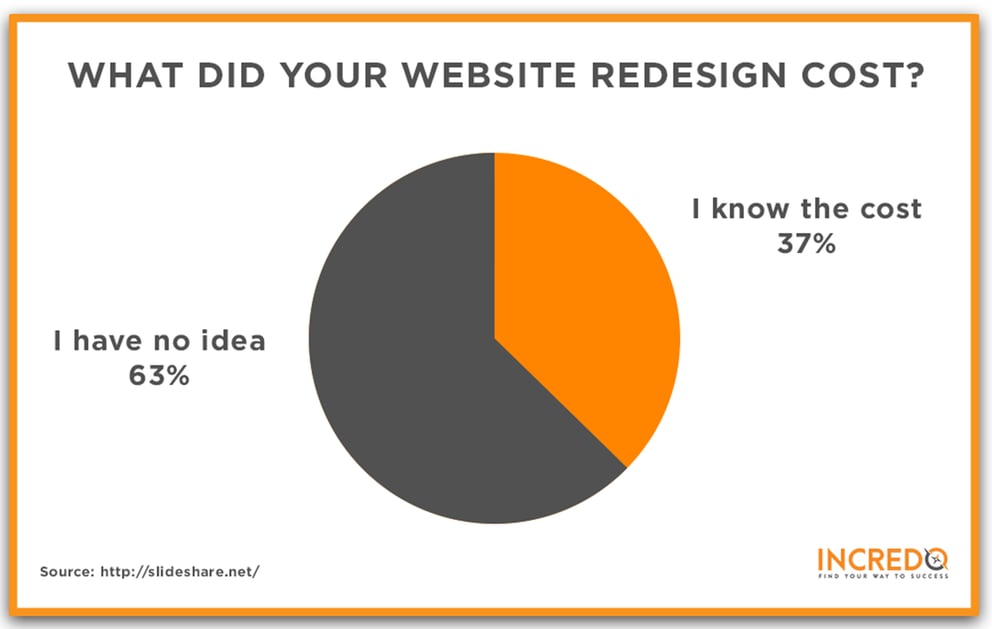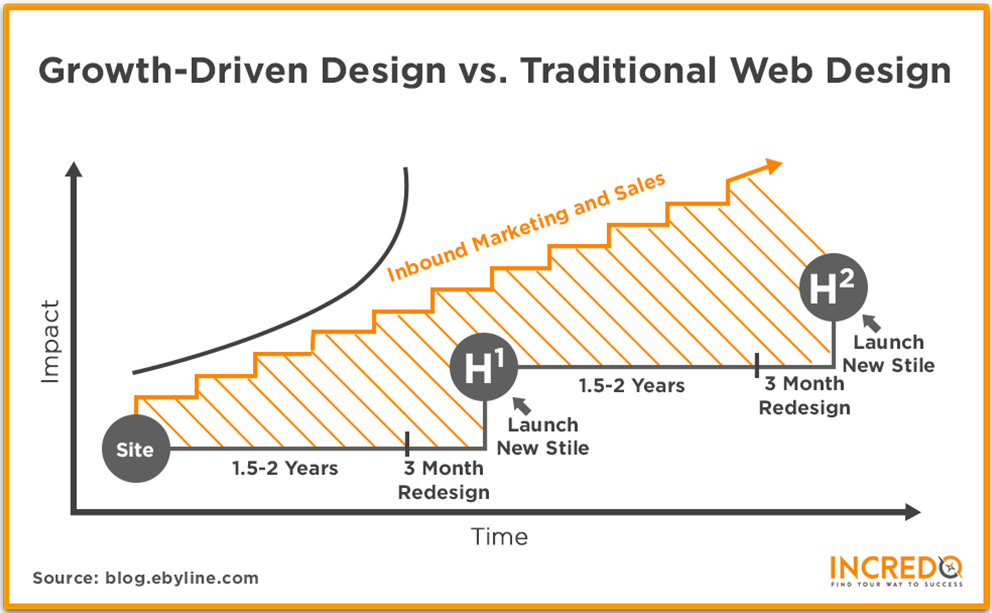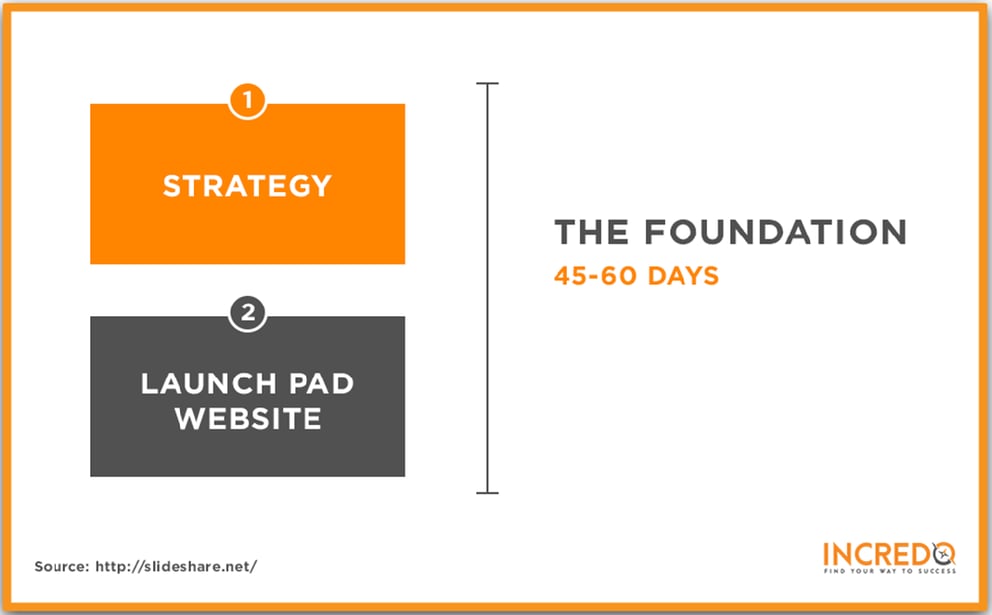Growth Driven Design 101: Why, How and When You Should Apply It in 2021?

Growth Driven Design 101: Why, How and When You Should Apply It in 2021?
‘If you think math is hard, then try web design’ – this is how design mavens like joking with the uninitiated, and there is a grain of truth in every joke. In this case – we can say, there is more than one such ‘grain’.
For many SaaS businesses (as well as others), web design is perhaps one of the toughest items on the development and marketing agenda, and this is for good reason. Website design is the virtual ‘business card’ of your company, the first and most memorable encounter with your products or services, the most influential impression that your potential customers get from your company to later make (or not to) a buying decision. That’s why it’s crucial to put sufficient efforts and resources in making it representative: the first impression is often the last one, too. As Ralf Speth, CEO at Jaguar put it: “If you think good design is expensive, you should look at the cost of bad design.”
However, unfortunately, designing a website takes more than one-time effort. Some design experts claim that to stay afloat in the fast-paced tech world, you should have your website re-designed once in every two years or so for. A time-consuming and costly process, indeed. (Actually, the very word of ‘redesign’ strikes as a nightmare for both designers and company execs).

If you’re a SaaS company owner, you know the feeling: you have jitters every time you think about traditional design and subsequently the design issues and costs necessary for a major redesign process. Don’t fret, though: we have excellent news for you: there is an alternative to the traditional design concept! As we already mentioned in one of our previous posts, you won’t have to go through the pain of the once-every-two-years heart-sickening redesign any more. No kidding.
Welcome to the world of Growth Driven Design, where you will reconsider your notions about how a website can and should be designed!
Of course, everything new is scary and not for the faint-hearted, but believe us, getting acquainted with GDD is worth a try. Already intrigued by the new concept? Scroll down! We’re going to present GDD in a nutshell – just for you to learn the key benefits it brings to the table.
GDD vs Traditional Design
If you are unfamiliar, you are probably asking yourself “What is GDD?” The term GDD was first coined and introduced by a group of web designers back in 2014. While working on a product, this group discovered that many old-fashioned design concepts are broken and flawed and, for better results, a new approach was needed. In an effort to deliver a design project in less time, they decided to abandon traditional design approaches and principles, introducing a set of new practices instead.
The main difference between the two approaches is in the timeline of delivering the final product – the ready-made website. In the case of the traditional approach, you brainstorm the design concepts based on your marketing goals, then hire (or contract with) a high-quality designer to tackle it. After the website testing and troubleshooting, it is launched with subsequent re-designs once every 1.5-2 years. During brainstorming, you hypothesize about your potential customers, their preferences and it’s always open to the possibility that your website hits the target or is miles away from it. This is a typical scenario for most SaaS companies, and other organizations that sell services or products.
Unlike traditional design approaches, the GDD model is rooted in practice. Right away, you identify your buyer personas and what they like – and then draft your action plan. So, in case of GDD, you focus on continuous learning, adjusting and delivering the website to your customers based on their needs and preferences and transforming it as they grow or change. As you can see, GDD is closely linked to marketing and sales (that’s why it’s also important to choose the right marketing and sales model for you company).
How Does The GDD Mechanism Function?
GDD consists of two major phases that typically take place over the course of one year – the strategy and launch pad phase (about 1 month), and the iterative and continuous improvement phase (11 months).
1. Strategy and launch pad phase
As we touched upon earlier, having a clearly articulated strategy and comprehensive collection of data on your potential customers, or buyer personas, is crucial in the GDD process. You identify your goals, objectives and try to outline the scope of your outreach – your buyer personas’ characteristics, preferences and pain points.
With this information at your disposal, you’ll then do quantitative research through a website and analytics audit which will explore how users arrive at your site, interact with it, and why they’re dropping off or bouncing.
Then you create the so-called ‘80/20 website wishlist’, i.e. assuming your 20% of the actions will create 80% of the impact (Yes, the good old Pareto principle is applicable here, too).
The next step is much like in the traditional website design model, including the content creation and messaging, information architecture, wireframing, programming and followed up with simple testing. This whole process should be finalized ideally within a month.
Then it’s time to launch the ‘pad’. In fact, the GDD concept hinges upon the idea of launching the website right away (unlike the old – school design approach). The launch pad is the starting point of all of your former activities. You’ll think: ‘Oh, how can I launch the website that is not 100% ready? That’s not professional!’ We answer: ‘Drop your perfectionism and forget about the old-school methods. It’s not going to work in this case! Just go and get the launch pad going quickly.’ Of course, the scale of your launch pad depends on your wishlist. A useful tip here is to cut down your list to 20% of the initial one – that will be enough for the first go. You will make the tweaks in the process, as you grow the launch pad. (Now you know where the very term growth-driven design stems from).
2. Iterative Development and Ongoing Improvement
In this phase, be prepared for even more deviations from old rules, and a quantum leap to a new design reality. Yes, GDD is really a game-changer in the web design world. For the upcoming 11 months you’re going to forget about the traditional design’s marathon, and run as a sprinter, as you’re going to work out sprint cycles of ongoing improvement and validation. Here again – your buyer personas are going to be the strong pillar on which your future steps are going to be based. During all walks of your design process, you should observe how the updates impact your end users. You may even need extra feedback from them to clarify your steps in this phase, which are as follows:
- Planning, that includes comparison of your website’s current performance against the goals for the website redesign, gathering extra data or doing additional research, consulting with sales and marketing teams and prioritizing the key items for your next monthly cycle.
- Development involves creation of the tasks and deliverables for your website, on the basis of the feedback from developers, marketers, sales managers and other related divisions of your company. This is the stage for when the launch pad is being created from the ground up.
- Learning involves reviewing data from your past practices in order to decide whether to continue in the same direction or ditch your assumptions as ineffective. This phase also includes making relevant changes in the content of the website, publishing outcomes and new findings for your team members to inform them about further steps.
- Transferring and sharing your findings with your GDD team, coming up with enhancement recommendations and tips is the last but not the least important step on the agenda.
So, now you’ve learnt the nuts and bolts of the GDD mechanism. It’s challenging and scary at the first glance, and we admit it might not be for every single company. If you’re still hesitating whether or not to apply the GDD in your organization, we have a few recommendations to help you.
When to Apply GDD? Is It Right For You?
When is the right time to start thinking about changing to GDD? Well, when the existing approach doesn’t work any more! So, if you think your website design is not effective and representative, plus it’s too time and money consuming, don’t hesitate – just go and swap it with GDD!
It’s also wise to consider GDD when you want to spread out your costs over time.
And, finally, the most weighty argument for GDD is the constant struggle of affording the whole post-launch process – major redesign once every 2 years.
So, Now You Know What GDD Stands For…
Of course, there are more nuances to GDD (which we are going to get further into detail with coming posts) than we have explained here, but we don’t want to keep you reading for three hours.
We don’t claim that GDD is perfect (no concept is, in fact). You should find the design method that matches your goals, objectives and budget. Maybe you’re happy with traditional website methods, or maybe you’re Mercedes-Benz and don’t need GDD, and just read the article out of sheer curiosity. (Congratulations – you’re among a list of the rare happy ones!)
But for many young and ambitious companies, traditional design is already outdated, especially for the rapidly growing SaaS sector. So, wind up your courage and screw the traditional. Go for the new and challenging – and reap the benefits of the risk!
Want to know more about how GDD can skyrocket your web design processes? Give us a ring!
Tags:
SaaS Growth
July 10, 2020



Comments